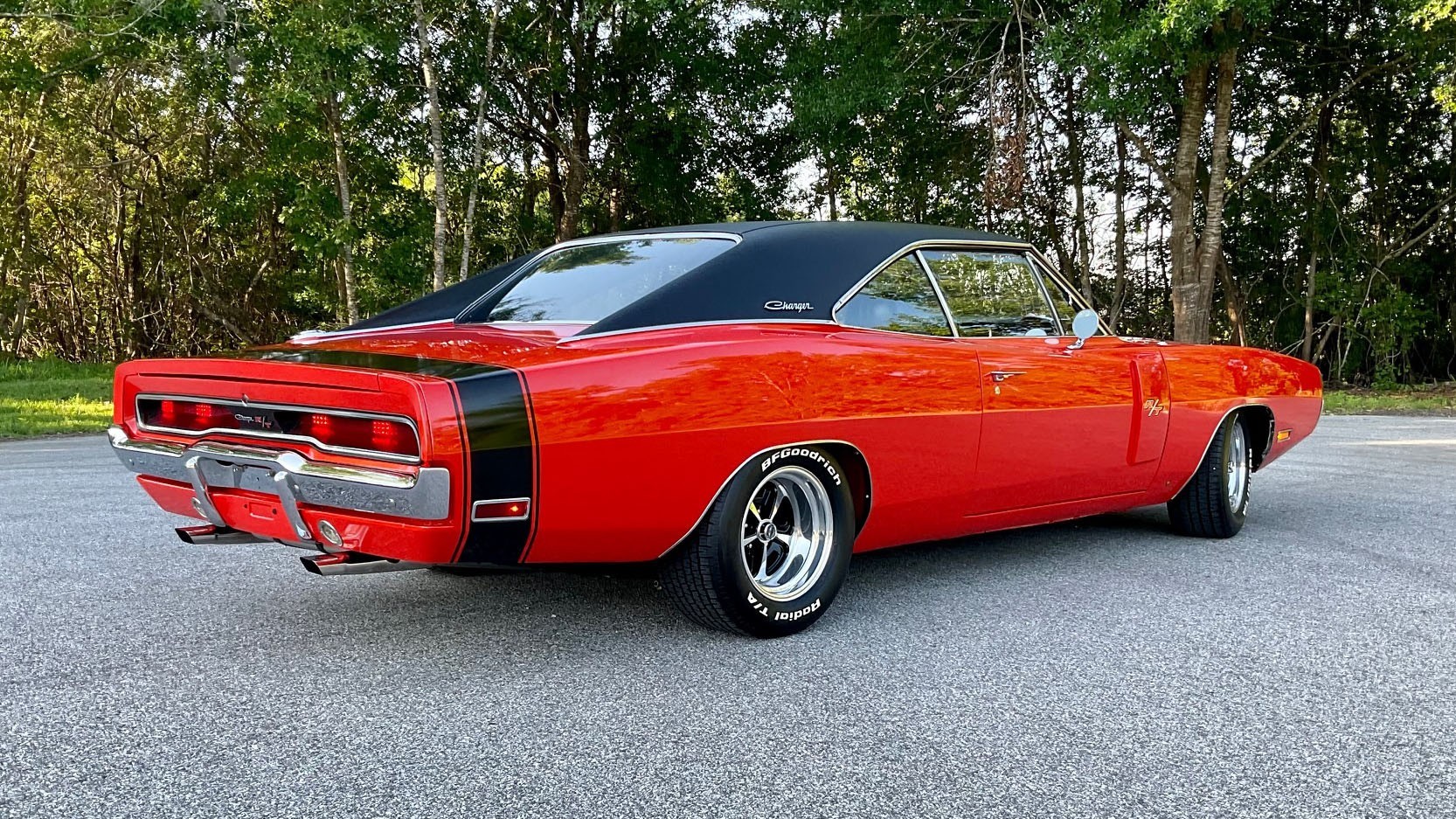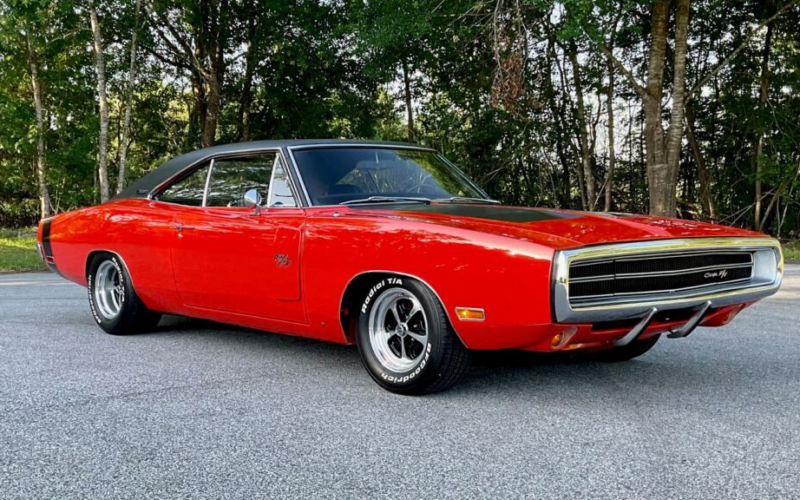This 1970 Dodge Charger R/T Is Ready To Flex All Of Its 440 American Muscle

There’s no replacement for displacement. We’ve all heard that before, and in the world of insane technical advancements and crazy tuners, it proves that the saying is kind of false, at least on paper. Because there are very few things that are cooler and more satisfying than feeling a big V8 rumble and hearing it scream when you mash the gas – and no one does it better than the Dodge Charger.
The Charger was born in part thanks to the Mustang. When Dodge and everyone at Chrysler saw Ford’s fun and reliable offering, they all freaked out. No one had a car in their lineups, even remotely similar to Ford’s new golden child. So, they needed a brand-new vehicle to compete with the Mustang, and they needed it fast.
After chaos ensued, a few designers at Dodge came up with a concept car. The new design was based on the 1964 Dodge Polara and looked terrific. It had no roof, a chopped windshield, and a roll bar thingy. Powering it was the 426 ci (7.0-liter) Hemi V8 (until it was reaped out and replaced by a stock 383 engine because of Hemi shortages). On the side of that wannabe rollbar was a badge written in cursive that said: Charger.

Of course, they only started to sell it after a while, but it got people talking, and finally, Dodge started producing a cheap sporty car of their own. The Charger name was first used as a package on the Dodge Dart GT Charger. But they still needed to solve their Mustang problem. They needed an entire car, not just a badge slapped on a limited run of vehicles. Their sister brand, Plymouth, launched the Barracuda to fuel the fire, putting more pressure on Mopar muscle to do something.
So, Dodge’s design team got to work on the brand new car based on the Coronet, and in 1966, the Dodge Charger was finally born. They changed the roof, the quarter panels, the decklid, and the grill so it looked properly mean, and with many engine options, including the 426 Hemi, you would expect it to sell like hotcakes. Even with racing wins behind its back, Dodge sold only 37,000 of them in the first year; meanwhile, Ford sold over a million Mustangs – so some more work was due for Dodge.
In 1968, Dodge’s design studio cooked up something pretty special. Richard Sias, the head of design, visioned an entirely new look for the Charger. The latest iteration borrowed a few design cues from the previous one but cranked them up to 11 and placed them in a brand new Coke-bottle styling.Advertisement

Also that year, a brand new package was introduced called the R/T, which took the Charger to the next level, making it the best possible version of what a 3,700 lbs (1,700 kg) sports car could be. Now, to see what makes it so good, let’s look at this one from 1970 and analyze it more profoundly.
On the outside, the 1970 Charger, the last year of the second generation, followed the same principle as the redesign from 1968 but did a little better. The main differences are the grille and the taillights, cementing the shape we still have today. This Charger is finished in the popping Hemi Orange with black tail stripes.Complementing the old-school muscle look, it has a set of American Racing billet Magnum style wheels measuring 15 inches with BF Goodrich rubbers around them that have white lettering, tying the retro look together. Behind said wheels, the R/T brought a few more goodies, like better suspension and more powerful brakes, but this one has Wilwood stopping power all around.
Moving on to the interior, it is mostly original and finished in black but accented by gray inserts on the seats and a whole lot of chrome. Adding a little class to the mix is a wooden dashboard and a wood-rimmed steering wheel, which fronts a 150 mph (240 kph) speedometer and an 8,000 rpm tachometer alongside a few other gauges.

Now, it’s time we get under that long hood of the Charger. You had many engine options, from a small slant-six to massive V8s. This particular model, being the R/T, featured two engine options: the infamous 426 Hemi and the colossal 440 ci (7.2-liter) Magnum V8 – which is the one this particular Charger has. The 440 was also available in two different configurations. One with the Six-Pack (three two-barrel carburetors) with 390 hp (395 ps), and the one that this Charger has.
While it only has one quad-barrel carb, the power output is still a respectable 375 hp (380 ps), going to the rear wheels via a four-speed automatic transmission with the ultra-cool pistol-grip shifter.This isn’t the top-dog Hemi Charger or the muscular six-pack Magnum. However, it still is a big V8 that makes all the right noises while looking incredibly cool – and if you like that, this particular one is up at auction and shouldn’t be too over-the-top expensive given its ‘modest’ configuration. But it is a numbers-matching car that looks incredible, so we’ll have to wait and see how much it goes for.
